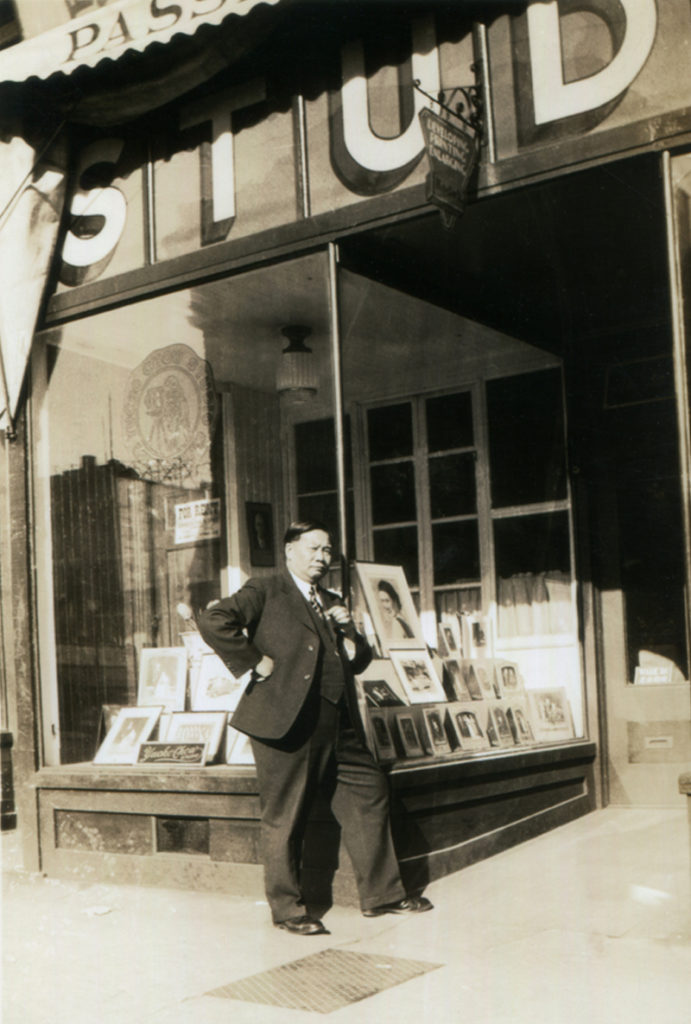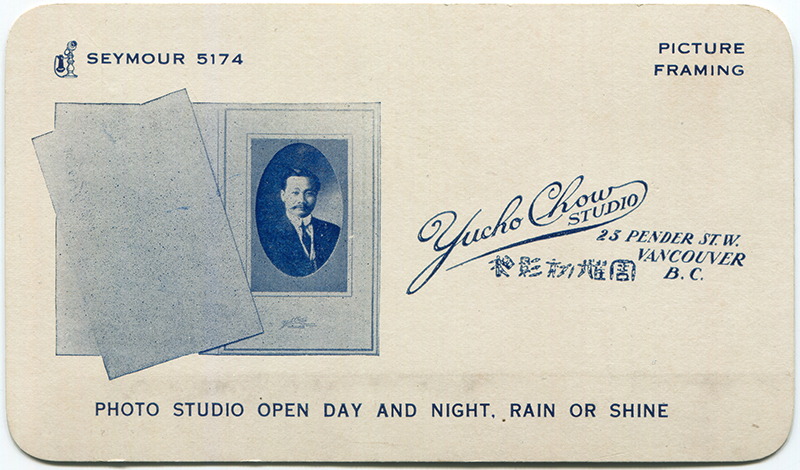
With a photography studio in the heart of Vancouver’s Chinatown, between 1906-1949 Yucho Chow captured a unique aspect of this remarkable neighbourhood’s history.
He photographed during a tumultuous and transformative period: Through two world wars; the Spanish Flu; and the Great Depression. Chow’s studio survived despite escalating racial tensions and laws that targeted Chinese and other non-white immigrants.
Although he was Chinese, Yucho Chow was one of the few commerical photographers willing to take photos of non-white customers. He chronicled the lives and special moments for early Sikh and Hindu immigrants; Black residents; mixed-raced families; Indigenous families; and newly-arrived European immigrants from countries like Poland, Croatia, Ukraine, Italy, Germany, Sweden to name a few.

Around 1906, Yucho Chow opened his first studio at 68 West Hastings. He later moved to the top floor of 5 West Pender (1909-1913); then to a street-level storefront at 23 West Pender (1914-1929) where his business thrived.
Finally, in 1930, he settled in at 518 Main Street and remained in that location until his sudden death in 1949. (His two sons Peter and Philip then took over and operated the studio a few doors down – at 512 Main — until their retirement in 1986.)
Boasting that his studio was “Open day and night, rain or shine,” over four decades Yucho Chow recorded thousands of faces. He photographed families, weddings, business people and entertainers. At his studio, he kept on hand an array of props that could be used in photos: a gold pocket watch, a necklace, books and other items that would lend his subjects an air of prosperity and success.
His lens captured the beginning and end of many lives: the faces of newborn children as well as the closed eyes of those who had passed away far from home. (Yucho Chow’s death photos often served as an informal death certificate that was sent back to families in China).
Outside the studio, Yucho Chow snapped images of businesses; community events; graduating school children; clan events; celebrity visits; and newly-arrived immigrants bleary-eyed after their long train ride across Canada.
Despite an incredibly large and diverse body of work, there were relatively few Yucho Chow photos stored in public archives when our project started in 2011. We discovered his negatives were discarded when the family photo studio business was finally closed for good in 1986.
Some of Yucho Chow’s surviving prints have ended up in dumpsters or thrift shops and have found their way onto sites like EBay.
However, the vast majority of surviving Yucho Chow photos were squirrelled away in private family albums and boxes.
Yucho Chow’s work was everywhere … yet nowhere.
This 10-year project, undertaken by community historian Catherine Clement, helped uncover those hidden photographs — on photo at a time, one family at a time. Today, the collection consists of over 600 images. Yucho Chow’s work has changed the way we understand Vancouver’s early history and the people who were part of it.

https://www.youtube.com/watch?v=JWHx6EDC6rY&feature=youtu.be
